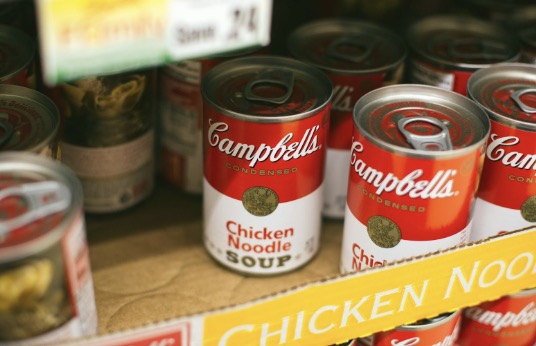Canned foods are a staple in many households due to their convenience and long shelf life. However, improper canning practices can lead to serious health risks, including botulism poisoning. Ensuring that canned foods are safe to consume requires careful inspection using visual and sensory checks. This blog will guide you through the process of examining canned foods to prevent foodborne illnesses and ensure safety.
Story Stages
The Importance of Visual and Sensory Checks
Visual and sensory checks are essential for identifying potential issues with canned foods before consumption. These checks can help detect signs of spoilage or contamination that might not be apparent through taste alone. By performing these inspections, you can reduce the risk of consuming contaminated food and protect your health.
Performing a Visual Check
- Inspect the Can’s Appearance
- Dents and Damage: Examine the can for any dents, bulges, rust, or leaks. Dents, especially those on the seams, can compromise the can’s seal and lead to contamination. Rust and leaks indicate that the can may be compromised and unsafe.
- Swelling: Look for any signs of swelling or bulging. This can be a sign of gas production from bacterial growth, which can indicate spoilage or contamination.
- Check the Can’s Lid and Seal
- Seal Integrity: Ensure that the can’s lid is intact and properly sealed. A properly sealed can should have a slight inward curve in the lid. If the lid is bulging outward or can be pressed down easily, it may not be sealed correctly.
- Rust and Corrosion: Inspect the lid for any signs of rust or corrosion. Rust on the lid or edges of the can could compromise its integrity and indicate potential spoilage.
- Look for Discoloration
- Food Color: Observe the food inside the can. Any unusual discoloration, such as dark spots or an off-color, can be a sign of spoilage. Freshly canned food should maintain its natural color.
- Liquid Clarity: Check the clarity of the liquid inside the can. Cloudy or discolored liquid can indicate that the food may be spoiled.
Performing a Sensory Check
- Smell the Food
- Off Odors: Open the can and take a careful sniff. Any unusual or foul odors are a red flag. Spoiled food often has a sour, rancid, or otherwise unpleasant smell, which is an indication of contamination.
- Normal Aroma: The food should have a fresh or characteristic aroma typical of its type. For instance, canned vegetables should smell like vegetables, and canned fruits should smell sweet.
- Examine the Texture
- Texture Changes: Assess the texture of the food. If it feels slimy, mushy, or has an unusual texture, it could be a sign of spoilage. Properly canned food should have a consistent and appropriate texture.
- Separation or Layering: Notice if the food has separated into layers or has an unusual consistency. For instance, if a canned soup has an odd consistency or appears separated, it may be spoiled.
- Taste a Small Sample (With Caution)
- Taste Test: If the food looks and smells normal, you can taste a small amount to further check for any off-flavors. However, if you have any doubts about the safety of the food, it’s best to avoid tasting it. Even if the food seems fine, it’s not worth the risk if you suspect contamination.
Understanding Botulism Poisoning
Botulism poisoning is a rare but serious illness caused by the bacterium Clostridium botulinum. This bacterium produces a toxin that can lead to severe foodborne illness if consumed. The risk of botulism is particularly associated with improperly canned foods. This is because the bacteria thrive in low-oxygen environments, such as those found inside improperly sealed or home-canned foods.
Symptoms of botulism poisoning can include nausea, vomiting, fatigue, weakness, blurred vision, and difficulty swallowing or breathing. If you suspect botulism poisoning, it is critical to seek immediate medical attention, as the condition can be life-threatening.
Safe Canning Practices
To reduce the risk of botulism and ensure the safety of your canned foods, follow these safe canning practices:
- Use Tested Recipes: Always use recipes and methods that have been tested and approved for canning. Follow instructions precisely to ensure that foods are processed correctly.
- Maintain Cleanliness: Ensure that all equipment and jars are properly sterilized before use. Cleanliness helps prevent contamination and spoilage.
- Follow Processing Times and Temperatures: Adhere to recommended processing times and temperatures for different types of foods. This helps ensure that the food is heated sufficiently to kill any potential bacteria.
- Store Canned Foods Properly: Store canned foods in a cool, dark, and dry place. Avoid exposing cans to excessive heat or moisture, as this can affect their safety and quality.
Conclusion
Performing a visual and sensory check on canned foods is a vital step in ensuring their safety and preventing foodborne illnesses like botulism poisoning. By examining the can’s appearance, checking the seal, observing discoloration, and using your senses to assess the food’s smell, texture, and taste, you can make informed decisions about whether the food is safe to eat. Additionally, adhering to safe canning practices helps minimize the risk of contamination and ensures that your preserved foods are safe and enjoyable.
